 Image search results - "kimono" Image search results - "kimono" |

Plum Blossom Queen at Kairakuen StationShe was passing out maps of the garden. It was a nice touch to see two of these kimono beauties greeting us.
|
|

Plum Blossom Queen
|
|

Rear view
|
|

"Heian" comes from "Heian-kyo," the former name of Kyoto city.
|
|

Tekomai geisha costume is partially masculine with trousers instead of skirts. Their right shoulder is "exposed" showing a flower design. They carry a red paper lantern imprinted with their names and use their right hand to drag a wand."Asakusa" is written on her lantern. 手古舞
|
|

The Heian Period was when Kyoto was the capital of Japan where the Emperor resided.
|
|

Kusatsu Shukuba Festival, Shiga Pref. 大奥夢道中
|
|

Tekomai geisha
|
|

The Aoi Matsuri (Festival) used to be called Kamo-sai, after the name of the two shrines which hold the festival.賀茂祭
|
|
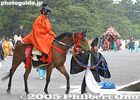
One of six court dancers called maibito. 舞人
|
|

Kusatsu Shukuba Festival, Shiga Pref.
|
|
|
|
|

1. Fuji Murasaki (Purple Wisteria)Dancer's name is Maiko 舞子
|
|

Narita Gion Matsuri
|
|

2. Sumidagawa (Sumida River)
|
|

Saio-dai Princess procession. 斎王代
|
|

The Saio-dai Retsu column begins. Consists of all women, highlighted by the Saio-dai Princess.
|
|
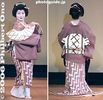
3. Edo no Nigiwai (Liveliness of Edo)
|
|

High-ranking lady of the court
|
|

Court ladies called myobu. 命婦
|
|

Court lady called myobu. 命婦
|
|

Kusatsu Shukuba Festival, Shiga Pref.
|
|
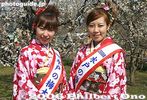
Plum Blossom Queens in Kairakuen, Mito
|
|

Court lady called myobu. 命婦
|
|
|

Miss Nippon
|
|

Plum Blossom Queens in Kairakuen, Mito
|
|
|
|

Miss Nippon throw beans, but not very far.
|
|
|
|
|
|

Kimono beauties and beans do mix well.
|
|

Ariwara no Narihira (825-880) comes to east Japan在原業平 東下り
|
|
|
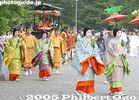
斎王代
|
|
|

Yamato Awa Odori
|
|

Pagoda and maiko
|
|
|
|
|

Court ladies called uneme. Their kimono have a blue wave design. 釆女釆女
|
|

Shrine maiden on horseback called Munanori Onna. 騎女They escort the Saio-dai Princess.
|
|

Teens in yukata
|
|

Shrine maiden on horseback called Munanori Onna. They escort the Saio-dai Princess.騎女
|
|

Bean throwers make speeches.
|
|

If you like women in yukata, see the Yoiyama (or Yoiyoiyama or Yoiyoiyoiyama during the three evenings before the main Gion Matsuri parade).
|
|

"Nanohanaya"
|
|
|

Shrine maiden on horseback called Munanori Onna.騎女
|
|

Miss Nippon somethings
|
|

Shrine maiden on horseback called Munanori Onna.騎女
|
|

Throw the beans farther!
|
|

Fuku wa uchi!!
|
|

Following the Saio-dai Princess are more high-ranking ladies of the court.
|
|
|
|

Setsubun bean throwing at Takahata Fudoson temple, Hino, Tokyo
|
|
|
|

Nohime, wife of Oda Nobunaga. 農姫
|
|
|
|
|
|
|
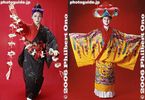
Okinawan KimonoOkinawa is a chain of subtropical islands in southern Japan between Kyushu and Taiwan. It developed its own language and culture while it was an independent kingdom centuries ago. Okinawan kimono, hairstyles, and dances therefore look quite different from the rest of Japan.
On the left is an Okinawan dancer wearing a kimono with her right arm exposed outside the sleeve. The dance is called "Nuchibana" (flower lei) featuring a string of red and white flowers. The dance expresses the feelings of a young woman in love.
The dancer on the right is wearing an Okinawan kimono called the bingata, perhaps Okinawa's most famous kimono. The design is made by applying dyes through a stencil. It was originally worn by Okinawa's royal family members. It is now the costume of a slow-moving Okinawan dance called "Yotsudake."
|
|

Yotsudake, Okinawa's most famous dance. 四つ竹
|
|

Dancer: Nariko Miyagi
|
|

Finale: "Hana Utage" (Flower Banquet) 花うたげ
|
|

Okinawan kimono called the bingata, perhaps Okinawa's most famous kimono. The design is made by applying dyes through a stencil.It was originally worn by Okinawa's royal family members. It is now the costume of a slow-moving Okinawan dance called "Yotsudake."
Model: Maki Uyeunten
|
|

Back view of yotsudake dancers on stage.
|
|

This dance is called "Nuchibana" (flower lei) featuring a string of red and white flowers.Okinawan dancer wearing a kimono with her right arm exposed outside the sleeve. The dance is called "Nuchibana" (flower lei) featuring a string of red and white flowers. The dance expresses the feelings of a young woman in love.
|
|
|
|

Kimono-clad beauties, winners of some Miss contest.
|
|
|

Tomioka Hachiman tekomai geisha
|
|

Dancer: Nariko Miyagi
|
|
|

Miss Ebisu-bashi
|
|

Finale: "Hana Utage" (Flower Banquet) 花うたげThis is a maiko.
|
|
|
|
|
|
|
|
|
|

Miss Ebisu-bashi Runner-up
|
|
|

Miss Ebisu-bashi Runner-up
|
|

Shinsaibashi Top Lady
|
|

Ebisu on a palanquin.
|
|

Geisha
|
|

Fukagawa Tekomai geisha make their entrance. 深川手古舞
|
|
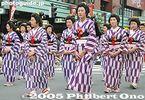
Inner palace women
|
|

Geisha on a palanquin
|
|
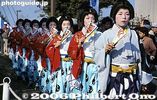
The Fukagawa Tekomai geisha make their way to the stage.
|
|

Inner palace women
|
|

Geisha on a palanquin, Toka Ebisu, Imamiya Ebisu Shrine, Osaka
|
|

They chant without instruments.
|
|
|
|
|
|
|

Each carry a lantern bearing their name.
|
|

They always carry a flower hat, but I've never seen them wear it.
|
|
|
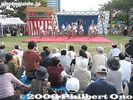
The stage in Kiba Park and spectators.
|
|
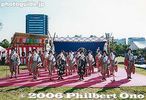
Fukagawa Tekomai Geisha performing at Kiba Park, Koto Ward, Tokyo.
|
|
|
|

Miss Ebisu-bashi
|
|

Mother and twins in yukata
|
|
|

High-ranking Lady of the Court 高級女官高級女官
|
|
|

Shinsaibashi Top Lady
|
|

High-ranking Lady of the Court高級女官
|
|
|
|

Another Shinsaibashi Top Lady
|
|
|
|
|
|
|
|
|
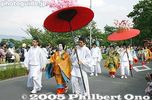
High-ranking Lady of the Court 高級女官
|
|
|
|
|
|
|

Kawaii!!
|
|
|
|

斎王代、齋藤彩子さん(21)
|
|
|
|
|
|
|

Court ladies called uneme. Their kimono have a blue wave design. 釆女
|
|

Shrine maiden on horseback called Munanori Onna. 騎女
|
|

Shrine maiden on horseback called Munanori Onna. 騎女
|
|

Shrine maiden on horseback called Munanori Onna.
|
|
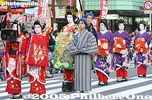
Oiran Dochu Procession. This is definitely the highlight of the festival, and my favorite part of the festival. 花の吉原おいらん道中
|
|

Shrine maiden on horseback called Munanori Onna.
|
|

Shrine maiden on horseback called Munanori Onna.
|
|

Kamogawa Odori Geisha Dance, KyotoA scene from the annual Kamogawa Odori dance held in May in Kyoto. She wears a multi-layer kimono whose colors contrast well with each other. This type of kimono was worn by the nobility.
See more photos of this dance here.
|
|

Oiran Dochu Procession
|
|

Shrine maiden on horseback called Munanori Onna.
|
|

Oiran Dochu Procession花の吉原おいらん道中
|
|
|
|
|

Oiran Dochu Procession in front of Kaminarimon Gate, Asakusa.花の吉原おいらん道中
|
|

Oiran Dochu Procession花の吉原おいらん道中
|
|
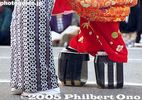
Oiran Dochu Procession. Her clogs. 花の吉原おいらん道中
|
|

Oiran Dochu Procession. This picture was taken in the 1990s when they had two oiran in the festival. Now they have only one. 花の吉原おいらん道中
|
|

Aoi Festival, KyotoHeld in May, the Aoi (Hollyhock) Festival is one of Kyoto's Big Three festivals. It is a long parade of people dressed in historical costumes from the Heian Period (794-1185) when Kyoto was Japan's capital. Each participant also wears a small branch of hollyhock.
See more photos of this festival here.
|
|

New Year's, Gifu Station
|
|

Coming-of-Age Day, Himeji
|
|

Kimono women going to a convenience store, Ako, Hyogo
|
|

Cigarette break on Coming-of-Age Day. Yes, they can now smoke legally.Ako, Hyogo Pref.
|
|

Oiran Dochu Procession花の吉原おいらん道中
|
|

Aoi Festival, KyotoThe parade proceeds through a long route in Kyoto, taking a few hours.
See more photos of this festival here.
|
|

Edo Geisha, She was the only one with a smile.
|
|

Edo Geisha江戸芸者
|
|

This was the only one who had a smile. The others were quite serious and solemn.
|
|

Mistress Okichi, the infamous mistress of Townsend Harris, America's first ambassador to Japan when he was in Shimoda. Another mistress was provided to Harris' interpreter.Okichi was the infamous mistress of Townsend Harris, America's first ambassador to Japan. Another mistress was provided to Harris' interpreter.
黒船来航・浦賀奉行
|
|

Textile exhibition 織物展The textiles were exhibited in the best rooms of the Palazzo Ducale, including the chapel shown here. Beautiful frescoes decorated the walls and ceilings. What a contrast it was between the Japanese kimono and religious motif.
織物は宮殿の一番豪華な多数の部屋に展示された。
|
|

Textile exhibition 織物展The textiles included kimono, noren curtains, and stenciled works.
着物、のれんなど展示された。
|
|

Textile exhibition catalog: Avvolti Nel Mito 織物展図録The textiles exhibited are shown in this catalog called "Avvolti Nel Mito" (Wrapped in the Myth) published by Ideart. Language is Italian. Order from PhotoGuide Japan's iStore.
|
|

Reception table backed by a board listing various corporate sponsors. I attended the final show on Oct. 29, 2008 at 3 pm.
|
|

Stairway to the hall.
|
|

A side attraction was a tea session (ocha-seki) performed and served by two geisha (or hangyoku). It cost 700 yen for tea and sweets. お茶席
|
|

Hall lobby (Get that trash bin outta there.)
|
|

The 2nd floor had a booth selling Asakusa geisha souvenirs. The dance program was 1,000 yen.
|
|

A hand towel with the names of all the current Asakusa geisha was selling for 1,500 yen. They also had T-shirts.
|
|

Name cards of all the geisha were sold for 100 yen apiece.
|
|

Name cards of all 49 Asakusa geisha.
|
|

The dance consisted of four numbers. The first one was called Sara Sanban-so (晒三番叟) which was first performed in Edo in Nov. 1755. 宝暦5年
|
|
|
|
|
|
|
|
|
|

There were only four dancers, but they went through several costume changes onstage.
|
|
|
|
|
|
|
|
|
|
|
|
|
|
|
|
|

Waving these white streamers created a dazzling visual effect. It must have been either the wind or river.
|
|
|
|

For the second number, there was a little stage for the musicians and singers on the right of the stage.
|
|
|

The second number was called Matsuri (Festival). It featured these three young village girls and two geisha dancers. 藤間流 まつり
|
|
|
|
|
|
|
|
|
|
|
|
|
|
|
|
|
|
|
|
|
|
|

The third number was called 三枚続花の姿絵 and consisted of three parts. The first part was called 星月夜 which means "Night of Stars and Moon."
|
|
|

These six geisha dressed as young maidens make their first-time appearance in the Asakusa Odori.
|
|
|
|
|
|

With a dark background, the geisha seemed to glow in the dark.
|
|
|
|
|
|
|
|
|
|
|
|

Sank into the stage to disappear.
|
|

The second part of 三枚続花の姿絵 was called Hagi no Hanazuma 萩の花妻 which means Bush Clover Flower Lady.
|
|

A more mature woman appears for this part set in autumn.
|
|
|

She left the stage this way.
|
|

The third part of 三枚続花の姿絵 was called Hana no Shojo 花の猩々 which means Flowery Heavy Drinker. This play comes from a Noh play.
|
|

The play is set during the cherry blossom season.
|
|
|

Three red-haired lions.
|
|
|
|
|
|
|
|
|
|

Drinking sake
|
|
|
| 1305 files on 6 page(s) |
1 |
 |
 |
 |
|